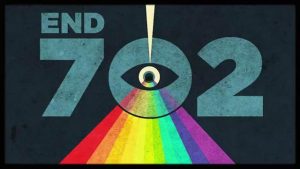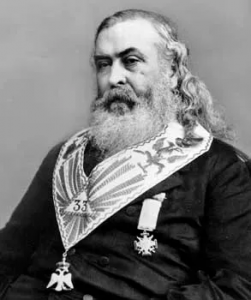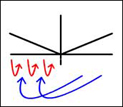“Nicaragua Betrayed” Summary— Chapter 14: The News Media and Jack Anderson
by Edward Ulrich
News of Interest.TV
February 20, 2011
This chapter explains issues of bias in the news media concerning Somoza’s administration, including the fact that the media would not report atrocities associated with the Sandinistas, issues with Somoza being slandered by a U.S. newspaper columnist Jack Anderson and by the television show “60 Minutes,” and also issues with the shooting of the journalist Bill Stewart.
Following are key points from the chapter:
— Somoza explains that he has read one or more U.S. newspapers daily since adulthood, and he has noticed that types of stories that should be unbiased “straight reporting” now often have opinions deceptively infused into them, to which Somoza attributes the downfall of Nicaragua and also Vietnam.
— Immeditely prior to the downfall of Nicaragua, the international news media constantly ran stories of supposed human rights violations, brutality, and torture in his country. The people of Nicaragua knew the allegations to be false, but the outside world, particularly the United States, received a different story. When the Communists gained control of the country, it was as if “their side had won,” and no mention would be made of the inhumane behavior of the Sandinistas despite all of the evidence that exists.
— Somoza says, “It’s difficult for citizens of the United States to understand that their President and their State Department were actually in the forefront of a Leftist movement to destroy an anti-Communist government.” [Note: The powerful political organization known as the Council on Foreign Relations (CFR) is often responsible for biasing mainstream media reports in order to forward globalist objectives including the spreading of Communism in countries of the world. See A Summary of the Documentary Video ”Behind the Big News”.]
— From pages 197 - 200:
There was regular communication among the U.S., Venezuela, Panama, and Costa Rican authorities. Cuba and Venezuela, through Panama, coordinated their actions. The plan was discussed, arranged, and brought to fruition. This could not have been accomplished without the fervent support of the Leftist-controlled press.
Two of the most influential newspapers in the Western Hemisphere are the “New York Times” and the “Washington Post.” These publications carried many stories that reflected badly on me and my administration. Karen De Young of the “Washington Post” and Alan Riding of the “New York Times” were biased, unfactual, and thoroughly prejudicial in their reports on Nicaragua. Alan Riding admitted to me that he opposed my government and that he was a Socialist. How fair can reporting be expected from such a dedicated member of the Left? Karen De Young and the “Washington Post” performed an excellent hatchet job on me. It’s not just happenstance that every time there was a congressional hearing on Nicaragua, on that very same day the “Washington Post” would carry an anti-Somoza article. This ploy, of course, was used to influence various U.S. Congressmen on that particular day.
After the Communists won, these newspapers and other elements of the news media were suddenly very quiet. Their mission had been accomplished. The slaughter of three thousand human beings was not important enough to warrant any kind of story. The inhuman brutality of the Sandinistas was not newsworthy. They had the information, as did Carter and the State Department, but it would not be disclosed. It’s impossible to reveal all of the atrocities committed by the Communists, but I shall discuss some of those so the true nature of these revolutionaries may be understood. Detailed reports of these crimes have been sent to Washington.
— The Sandinistas captured, tortured, and shot Lt. Juan Ocon. While he was still alive his head was cut off. His family could not find his head so the family buried him with a plaster head attached to the body.
— Alvaro Sanchez was taken out of his home and shot in the presence of his mother and children.
— Pedro Pablo Espinoza, newspaperman and member of the Liberal Party, was captured by the Sandinistas in El Dorada. He was tortured, his eyes gouged out, and was then shot.
— In Leon, thirteen young members of the Guardia Nacional surrendered to the Sandinistas. They were taken to the football stadium in Leon where they were all shot.
— While Lt. Rene Silva, a member of the Guardia National from Matagalpa, was at the battle front, the Sandinistas went to his home and murdered his wife and two children, four and two years old.
— Dr. Rafael Saavedra, General Director of Customs, was burned alive by the Sandinistas and his two sons killed.
— Two female police students were captured. One of them was four months pregnant. They opened her up and pulled the fetus out. According to sworn testimony given to the U.S. House of Representatives and which appears in the February 26, 1980 Congressional Record, this group was under the command of an American by the name of Clifford Scott.
— Major Domingo Gutierrez and six of his men were captured. They were placed in a hole, sprayed with gasoline and burned alive.
— Sergeant Edwin R. Ordonez of the infantry training school was captured and burned alive.
— Dr. Cornelio Hueck, former President of the Congress, was captured at his ranch near Rivas, he was taken to the town square of Tola where he was shot several times in non-vital areas. Then, with the people of the town present, he was placed on a table and, while he was still alive, his heart was cut out.
— Major Pablo Emilio Salazar, better known as “Comandante Bravo,” was captured by the Sandinistas in Honduras after the war was over, and tortured to death. His face was beaten beyond recognition, his arms broken, his ears cut off, his genitals severed, strips of his skin peeled from his body and, finally, he was shot in the head.
Several times I have mentioned Commander Bravo, because he was a “soldier’s soldier.” On August 1, 1979, Commander Bravo testified in Washington D.C., before a press conference called by Congressman John Murphy of New York. Other former members of the Guardia Nacional gave statements that day as well as numerous civilians. Those Nicaraguans were there to tell the American people of the horrible atrocities being committed by the new Marxist regime.
...
The foregoing is just an indication of the horrible crimes committed by the new Marxist government in Nicaragua. Verification and complete statements concerning these mentioned crimes can be found in the “Congressional Record” of February 26, 1980.
But the list of those who were raped and murdered goes on and on. Perhaps it should be pointed out that by and large, these heinous crimes were committed AFTER the Marxist victory. As I have stated previously, some three thousand men, women, and children of Nicaragua have been slaughtered. These murders continue until this day, and the brutality is unbelievable.
One thing is clear; the human rights standards proclaimed by Mr. Carter do not apply to the Communists. It should be clear to all that his program only applied to anti-Communists. Further, the news media are now content. They no longer direct their attacks upon Nicaragua. For this position, there is an obvious answer. The Communists now control Nicaragua.
The conclusion one has to reach is that the power of the press is awesome. It makes no difference who you are or what you are, if this sector of our professional society wants to destroy you, it can be done. Again, the would-be straight press is not so straight.
— Somoza explains that he has no quarrel with editorial writing where opinions are intended to appear, and he also defends the rights of columnists to express their views as long as they tell the truth; but unfortunately many columnists become obsessed with a cause or are willing to sell their integrity and they lose sight of truth and objectivity.
Somoza Constantly Slandered by the U.S. News Columnist Jack Anderson
— Somoza explains that the columnist Jack Anderson is a good example of a corrupt journalist. Somoza says, “If you read his column regularly, you will know that I’m not the only man he has sought to destroy. You will also know that I’m not the only person about whom he told vicious lies.” Somoza says that Anderson abruptly started attacking Anastasio, his mother, his son, and his entire family, and Somoza decided that he needed to find out why he was suddenly out to get him.
— After directing some intelligence gathering efforts, Somoza found connections between Venezuela’s Perez, Pedro Joaquin Chamorro, and Jack Anderson. Somoza says, “We had information coming from many sources but the revealing source was the Venezuelan Embassy in Washington. From that source, we were advised that the Foreign Ministry of Venezuela had authorized her Embassy in Washington to expend a sizable sum of money in order to “Convince” certain influential members of the press that Somoza should be destroyed. The contacts were made. Shortly thereafter I was under attack. And Jack Anderson led the assault.”
— Anderson’s mission was twofold, first to destroy Somoza’s support in the U.S. Congress and to turn U.S. public opinion against him, and secondly to attempt to turn the people of Nicaragua against him through influencing Chamorro’s La Prensa paper in Nicaragua. The plan worked in the U.S., but not in Nicaragua.
— After Anderson started attacking Somoza, Chamorro became frightened, correctly believing that Somoza would think Anderson’s information was coming from him, and Chamorro vehemently denied having anything to do with Anderson’s stories. Chamorro even ran a story in La Prensa in which he denounced the Anderson articles and claimed innocence of any participation, however, after Chamorro’s death, Anderson wrote in his Column, “Now that he is dead, I would like to give notice that Pedro Joaquin Chamorro was a patriot who gave me all the information to write about Somoza.”
— Somoza had the newspaper Novedades, in which his family had an interest, to run the full text of Jack Anderson’s most vicious articles in order to show the people of Nicaragua the extent of Anderson’s corruption. Somoza says, “My victory in Nicaragua was a small one. Anderson’s victory in the U.S. was a big one.”
— Somoza explains that he is staunchly in favor of freedom of the press even though he has often been treated shamefully by the media. He uses the analogy of an unattended rotten apple left in a barrel which then spoils the other apples, saying, “If given a free license to lie and use dastardly tactics in personal vendettas, the contents of the press barrel will turn to rot.”
— Somoza explains that he thinks television has the greatest impact, explaining that there are more televisions per household in America than anywhere else, and that a recent survey showed that the average household in the U.S. had a television on for more than six hours a day. Somoza says, “That’s incredible. I wonder when people have the time to talk, or read, or visit with neighbors.” Somoza also mentions how all of the major networks will cover the same international and national news stories without variation between each.
CBS’s 60 Minutes Slanders Somoza
From pages 206 - 208:
On Sunday afternoon, Sixty Minutes is the most watched network show in the United States. With top ratings, the show commands big money. If you don’t believe it, pay for one thirty-second spot. I have watched the show and I am familiar with its format. Generally speaking, the show is not complete unless someone is nailed to the cross. Also, the program will invariably sneak in a touch of propaganda. You can be sure this propaganda is slanted to the left.
When I was advised that Sixty Minutes wanted to interview me, I certainly had misgivings. I had seen what they can do to a person. I saw them absolutely destroy a mayor from some town in Indiana. The thought of being interviewed by people so adept at crucifixion frightened me.
... I wanted the people of the United States at least to be exposed to the pro-Nicaraguan government side. ... So when we were contacted by “Sixty Minutes,” I felt the proposal should be given serious consideration.
... I wanted so much for the American people to understand the realities of our situation in Nicaragua and to know what the Administration in Washington was doing to us, and I agreed to do the program. All arrangements were made and Dan Rather was sent down to do the program. That interview I shall always remember.
Rather tried every conceivable journalist trick to trip me up on questions. He knew in advance the answers he wanted and come “hell or high water” he was going to find the question to fit his preconceived answer. Well, he never succeeded. From watching the show, one would never know that Dan Rather spent two and one-half hours grilling me. ... Rather condensed the entire time to seven minutes. ...
I didn’t realize what the power of film editing really meant. With that power, Rather cast me in any role he chose. Everything good I said about Nicaragua was deleted. Any reference to Carter’s effort to destroy the government of Nicaragua was deleted. Every reference to Communist activity and Cuba’s participation was deleted.
His insistence that there was torture in my government probably disturbed me the most. We would go over the subject and then we would come back to it again. He just wasn’t getting the answers he wanted. Finally he said: “May we visit the security offices of the Nicaraguan government?.” He had heard there was a torture chamber there and he believed it. I replied: “Yes, Mr. Rather, you may visit those offices and you may take your camera.” Then I added: “You go right now, take that car and go immediately so that you can’t say I rigged it.” Well, he did go, and he saw where the people worked and talked to many of them. When the show came on the air, he made no mention of the fact that he had personally visited our security offices and was free to film, talk to the people, or do anything he wanted to do. He knew in advance how he wanted to portray me and his predetermined plan was followed.
When Rather left my office, I was convinced he would take me apart. I was right. The show was a disaster. Rather depicted a situation that didn’t exist in Nicaragua. That show did irreparable harm to the government of Nicaragua and to me. Such massive misinformation also does harm to the American people.
The Death of the Journalist Bill Stewart
From pages 207 - 208:
I always played fair with the press but it was a one-way street. The media did not play fair with me. The tragic and unfortunate death of the newsman, Bill Stewart, is an example of the one-way street to which I refer.
One must understand that the circumstances surrounding the untimely death of this man were not what could be called normal. Nicaragua was in a life-and-death struggle with a highly sophisticated, Communist enemy. In such surroundings, judgement is not always what it should be. The enlisted man who shot Mr. Stewart was stationed at a forward checkpoint and had been under fire and, like so many of the members of the Army, had been on duty too long without sleep.
Mr. Stewart had passed the first checkpoint and proceeded to the second. I think the Miami Herald was the only major paper to report the fact that the enlisted man had twice ordered Stewart to halt. These orders were ignored and Stewart was killed. I’m the first one to admit that the enlisted man, literally, made a fatal error. I am not now defending his actions, but I do feel the circumstances of this unfortunate incident should be known.
As the world knows, this entire tragic episode was taped with a mini-cam television camera. It was never explained that I had the authority to seize the film and, as a matter of fact, this was suggested to me. But I had always played fair with the news media and that time was no different. I permitted the film to be shipped out and the rest is history. Certain stations in the U.S. ran the film clip every twenty minutes. The results were devastating.
In the eyes of most Americans, Somoza pulled the trigger that killed Stewart. That was the message the media wanted transmitted, and that was the message that came through. When the news of Stewart’s death reached me, I remember placing my head in my hands and saying, “My God, how could this happen!” But the deed was done and there wasn’t enough remorse in the world to undo it.
This one tragedy, all documented on film, did more to turn public opinion against me and the government than anything else. Yet, there was a war going on in Nicaragua, and it was a prerogative of the government to censor or have press control. This we never did, and the film showing Stewart’s death was released. I believed in freedom of the press and defended that freedom until the end. Had I been a dictator, as so many members of the news media claimed, nothing critical of me or the government of Nicaragua would have gone out of the country. The media were permitted to film, write, and transmit anything and everything— the good and bad. It is well known that very little, if anything, good was ever transmitted.
Purchase the book “Nicaragua Betrayed” from Amazon.com.








